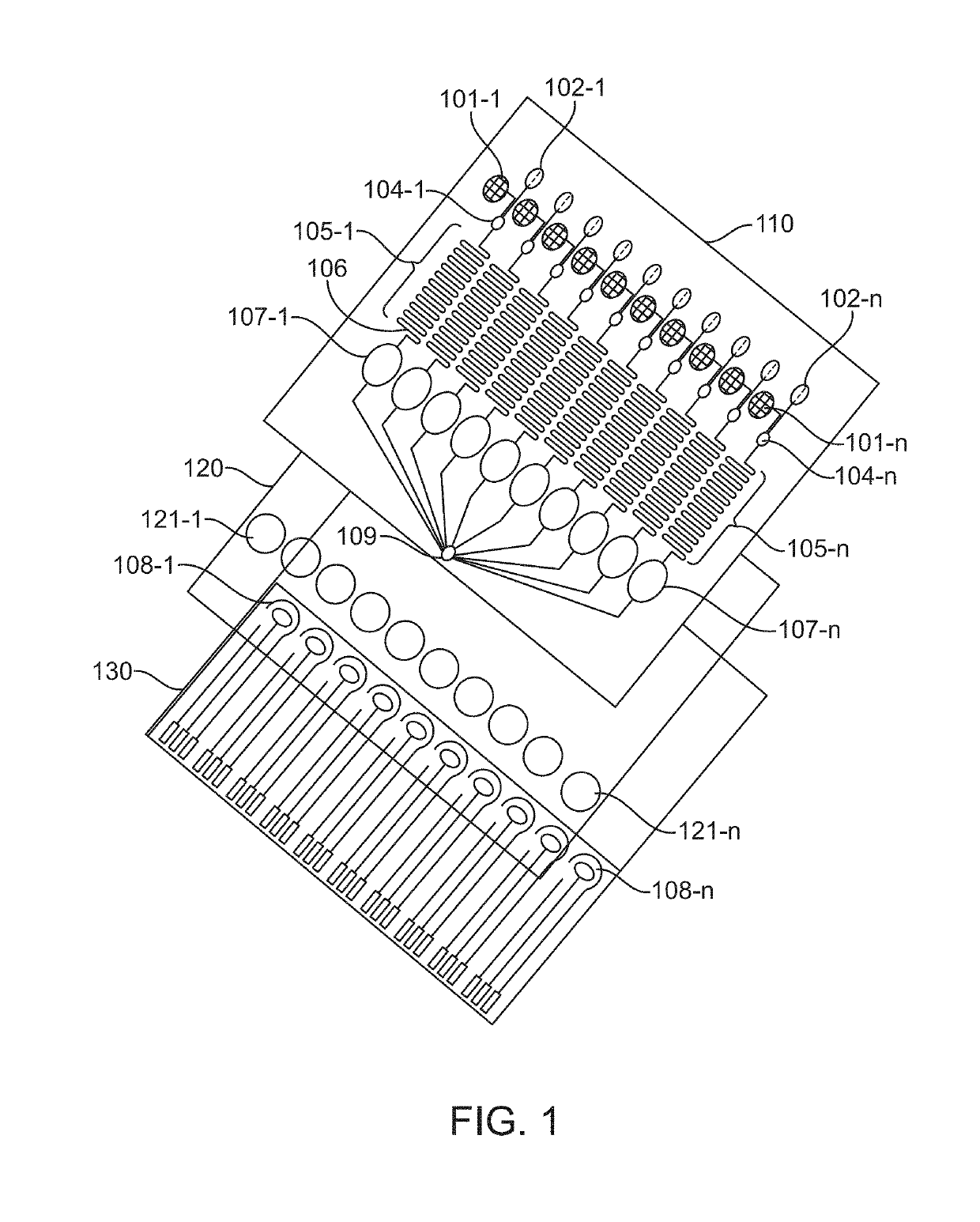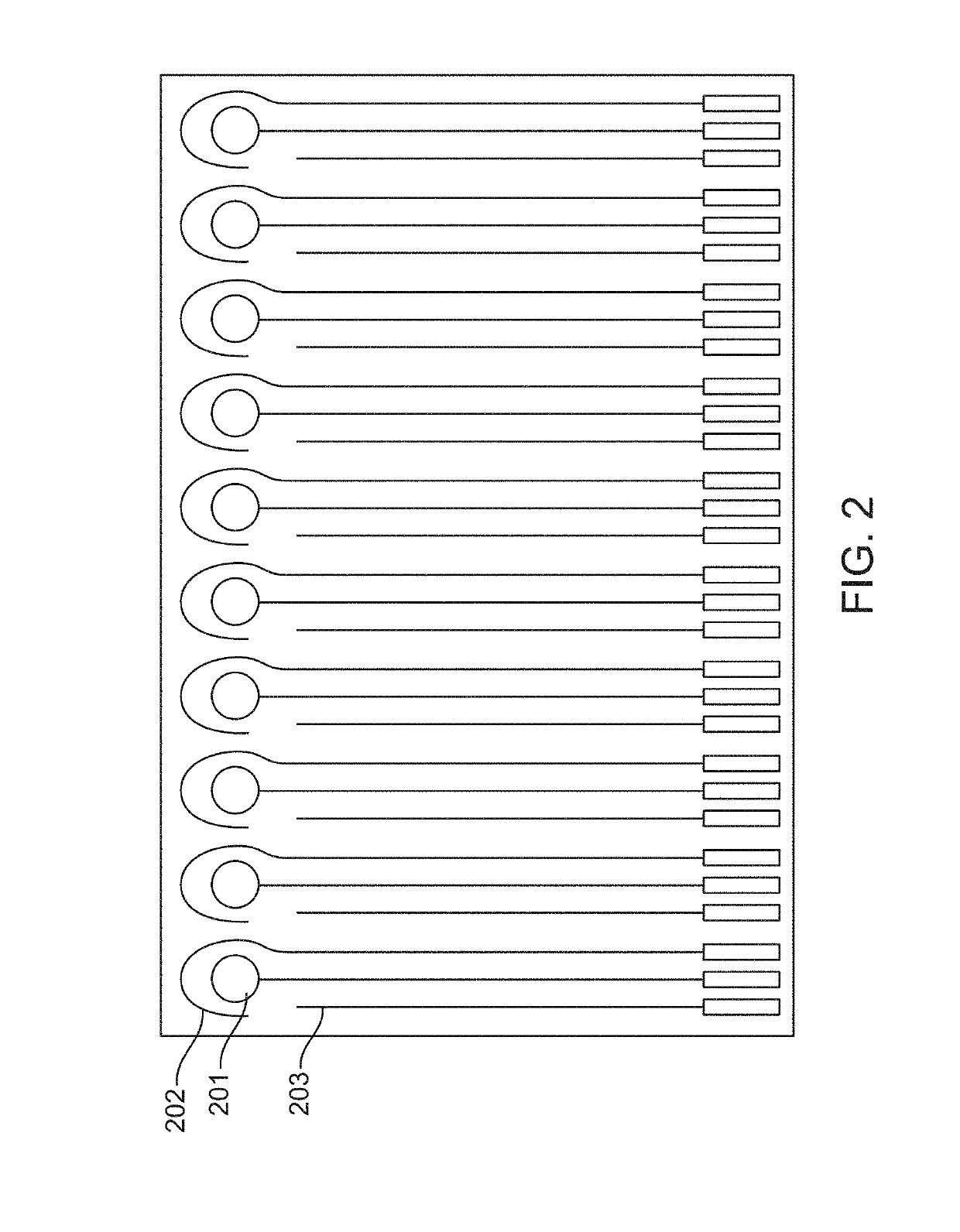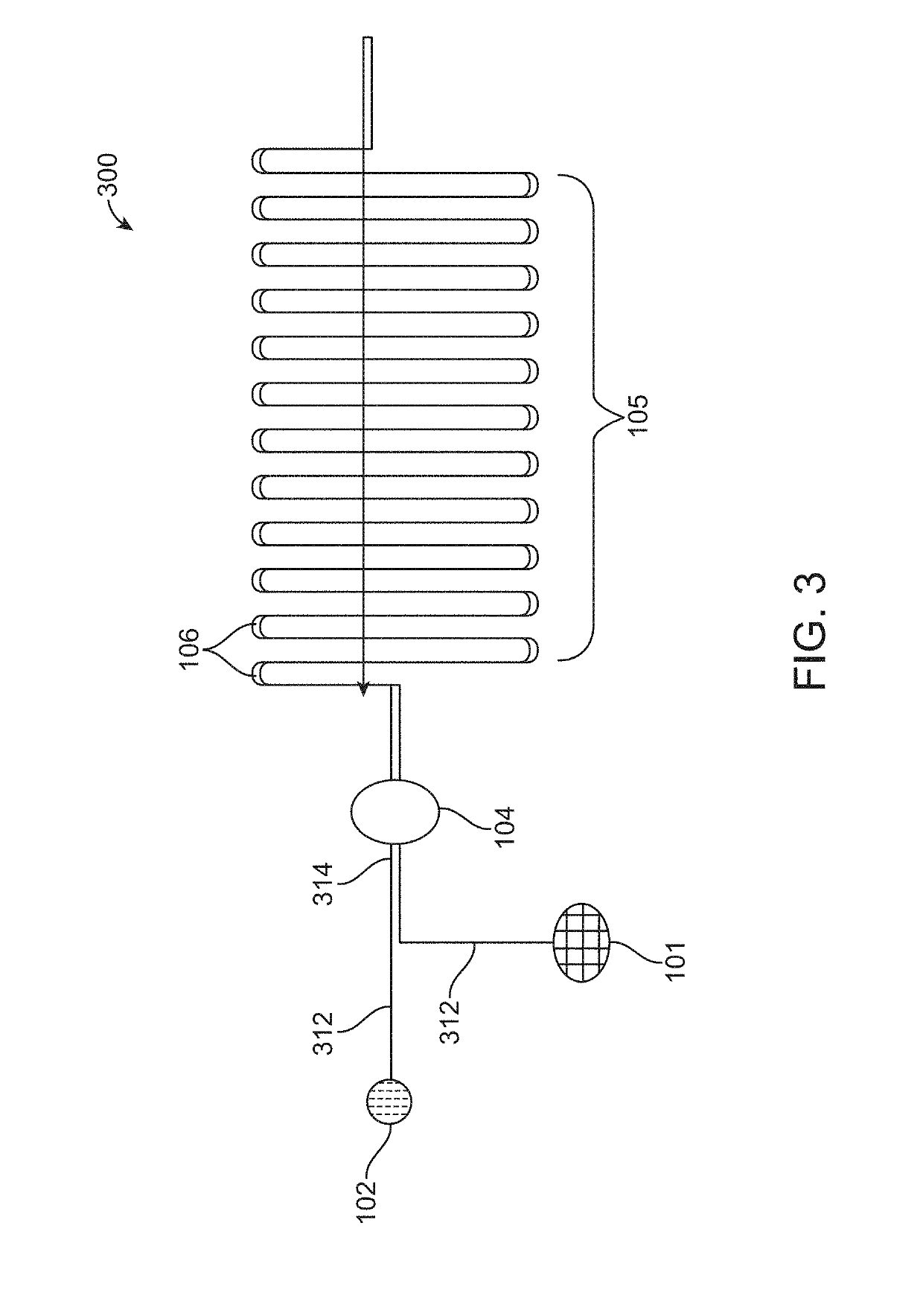Lab on a chip device for multi-analyte detection and a method of fabrication thereof
a chip device and multi-analyte technology, applied in the field of microfluidic array devices, can solve the problems of high cost, difficult development of loci for clinical analysis, and tedious laboratory process for quantitative determination of these biomarkers, and ensure the integration of the different layers
- Summary
- Abstract
- Description
- Claims
- Application Information
AI Technical Summary
Benefits of technology
Problems solved by technology
Method used
Image
Examples
example
Example 1: Lab On Chip (LOC) Device Fabrication, Testing and Validation
[0088]Materials and reagents: SU-8 negative photoresist (GM1075, 100 μm-400 μm) was purchased from Gersteltec Sarl (Switzerland). PDMS (184 silicon elastomer) prepolymer and curing agent was obtained from Dow Corning (Midland, USA). Polyethylene glycol (P3015, MW200) and D-(+)-glucose, creatinine, cholesterol and uric acid were purchased from Sigma Aldrich, Bangalore. Bilirubin was purchased from TCI Co. Ltd. (www.tcichemicals.com). Inks for screen printing, silver (5874). AgCl (5064H), carbon (BQ242) were obtained from DuPont Ltd. PET substrate for screen printing and circular glass plates (diameter 4′, surface roughness ≤10 μm, thickness 2 mm) were obtained from local manufacturers. All other chemicals were of analytical grade and used as received. Piranha solution was prepared by mixing concentrated H2SO4 and H2O2 (30%) in the ratio 3:1. Flow visualization and mixing studies were carried out with colored solut...
example 2
on and Testing of an Indigenous Meter for Simultaneous Detection in LOC
[0104]A handheld electronic meter based on electrochemical principle was fabricated for the simultaneous detection of glucose, cholesterol, creatinine, uric acid and bilirubin. For this, a multi potentiostat circuit was designed that can maintain potentials across the counter and working electrodes of all the sensors. The analog front end (AFE) IC is used as the potentiostat.
[0105]Microchip's enhanced midrange microcontroller PIC16LF1783 is used as the brain of the system. The controller controls AFEs, RTC, LCD and BLUETOOTH modules. Texas Instrument (TI) LMP91000 is used as the Analog Frond End (AFE). This IC acts as the potentiostat for electrochemical reaction. The advantage of this IC is that it is programmable. The cell bias and transimpedance amplifier gain can be easily programmed through the I2C interface, helping maintain the required potential for the different sensors accurately as well as obtain curre...
example 3
tion of Concentration of Glucose in a Plurality of Samples
[0112]Materials and Instruments: An exemplary device according to the various embodiments of the invention as illustrated in FIG. 1 was prepared. The experiment was conducted with Glucose (Glucose, reagent), ascorbic acid (AA, reagent grade), dopamine (DA), uric acid (UA, 99.0% crystalline), acetamidophenol (AP, 98% analytical standard). Conducting inks of carbon, silver and Ag / AgCl were used for the preparation of electrodes. A silicone elastomer kit and Polydimethylsiloxane (PDMS) were mixed in the ratio of 10:1 prior to use. Negative photoresist and developer were used in the fabrication of microchannels. The experiment was carried out with a three electrode cell. In the case of screen printed electrodes AgCl ink printed electrode was used as the pseudo reference electrode. The modified electrodes were used as working electrodes and carbon as the counter electrode. Surface morphology of the modified electrodes was studied ...
PUM
| Property | Measurement | Unit |
|---|---|---|
| depth | aaaaa | aaaaa |
| depth | aaaaa | aaaaa |
| diameter | aaaaa | aaaaa |
Abstract
Description
Claims
Application Information
 Login to View More
Login to View More - R&D
- Intellectual Property
- Life Sciences
- Materials
- Tech Scout
- Unparalleled Data Quality
- Higher Quality Content
- 60% Fewer Hallucinations
Browse by: Latest US Patents, China's latest patents, Technical Efficacy Thesaurus, Application Domain, Technology Topic, Popular Technical Reports.
© 2025 PatSnap. All rights reserved.Legal|Privacy policy|Modern Slavery Act Transparency Statement|Sitemap|About US| Contact US: help@patsnap.com



